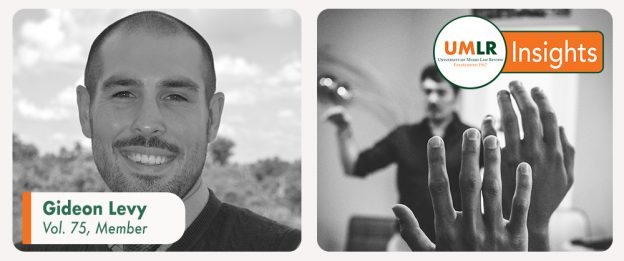GIDEON LEVY—In an atmosphere of growing bar passage rates, law student enrollment, and demand for law professors, law school exams are sure to (continue to) remain a hot button issue for years to come. Students and professors alike know the practice of exam taking and making as a “necessary evil.” But in the right hands, the final exam could actually be more good than evil.
Without a doubt, law professors are hard workers. Most engage in legal scholarship, and some even lead clinics that change lives and shape communities. Yet, from within their own industry law professors have been chastised for the effort they put forward to write (or reuse) exams. Administrations compound the issue by fostering a “publish or perish” mentality, which can lead professors to prioritize scholarship over students. But law professors are teachers, and that subjects their work to pedagogical principles and critiques.
Legal pedagogy has advised professors on everything from reducing racial and gender discrepancies to questioning the efficacy of cold calling and the case method. It has also again and again covered the end of the semester exam. How professors write exams is well known, as is how they grade. But when they write exams seems to be a closely guarded secret. Anecdotally, it seems the average law professor writes their final exam in the closing days of the semester. Modern pedagogy demands otherwise. This blog explores the disconnect and offers some simple suggestions.
One of the leading texts in educational graduate programs on student assessments is “Understanding by Design” by Jay McTighe and Grant Wiggins. Educators affectionately refer to it as “UbD,” a tried and true advancement of modern pedagogy. The central thesis of UbD is that optimal student learning happens when the instructor begins with the end in mind. It is a three-stage process. First, instructors identify the key concepts and skills of the course. Second, they create a final exam designed to gauge student competency of those concepts and skills. Finally, instructors generate a plan of daily or weekly learning exercises that align to the final. I argue law professors struggle in the last two stages. And to flesh out this argument, I interviewed two academics: a New York City based professor of pedagogy in a graduate school for teachers, Alisha Ragan, and a faculty member with the University of Miami School of Law, Professor X, who prefers a pseudonym.
“Understanding by design is not fundamentally difficult,” Professor Ragan explained. A seasoned student and teacher of teachers, Professor Ragan noted that graduate programs in every field deviate largely from accepted pedagogy. “UbD is a tool to build investment in content and trust in the teacher,” it works across contents and grade levels she argued. But is law school unique? “It depends,” mused Professor X. He does not see a silver bullet for law school exam making. In fact, Professor X described decades of various ABA efforts to the end of improving final exams and expressed doubt about the viability of UbD in law school.
“Maybe it could work if the primary goal is conveying information, like black letter law,” he pondered, “but how can you teach ambiguity?” Furthermore, there is more law than professors have time to teach. “At this level, barely-covered content is fair game because this isn’t the 8th grade.” He conceded that many professors have a problem in communicating the big ideas they plan to test. But that “improves over time,” he argued, “and most professors would say they teach each class with the end goals in mind,” even if they “do not express it.” Professor Ragan echoed similar thoughts. “Law professors are training professionals,” something quite different than a K-12 student moving through a pipeline towards higher education. But Professor Ragan worried that “professors may forget they are still working with learners, not just future lawyers.” Ultimately, the disagreement between Professors Ragan and X seems to be one of degree, not kind, as both made similar suggestions on how to better align exams with course content.
Professor Ragan recommended “small steps” at the start of the year. Her suggestions included “framing” key cases and policy arguments important to the final on “Day One,” as well as updating the syllabus to focus more on “hot spots” identified in the previous year’s exams. She also encouraged professors to “consider how class demographics” impact question performance; culturally responsive pedagogy as it were. Writing the exam before the semester begins is “ideal,” Professor Ragan noted. This allows professors to plan in “Key Learning Exercises,” tasks designed to help students “acquire new knowledge and skills, make meaning of it, and then transfer it to a new setting.” Professor Ragan suggested that KLEs in law school could be cases or policy arguments. She emphasized that students and professors need to be able to form a “clear picture of progress” as the semester moves forward. In a similar vein, Professor X recommended professors improve their “articulation of goals and skills,” specifically to help students “isolate what’s asked for in particular questions.” He disagreed with the idea of writing exams before the semester begins. “Some of what drives the test is class discussion.” Instead, he suggests making “exam banks” available to students and testing “different question types for different skills.”
Ideally, UbD allows instructors to confidently march their students to the final exam because every lesson is designed with that end in mind. Again, law professors are busy people. But this teacher turned law student encourages these professors to consider that UbD does not add time as much as resettles it to an earlier point in the semester. UbD and “planning backwards” is the paradigmatic “help me help you.” The clearer the picture of the final is to the professor, the clearer the path of success can be to the student.






